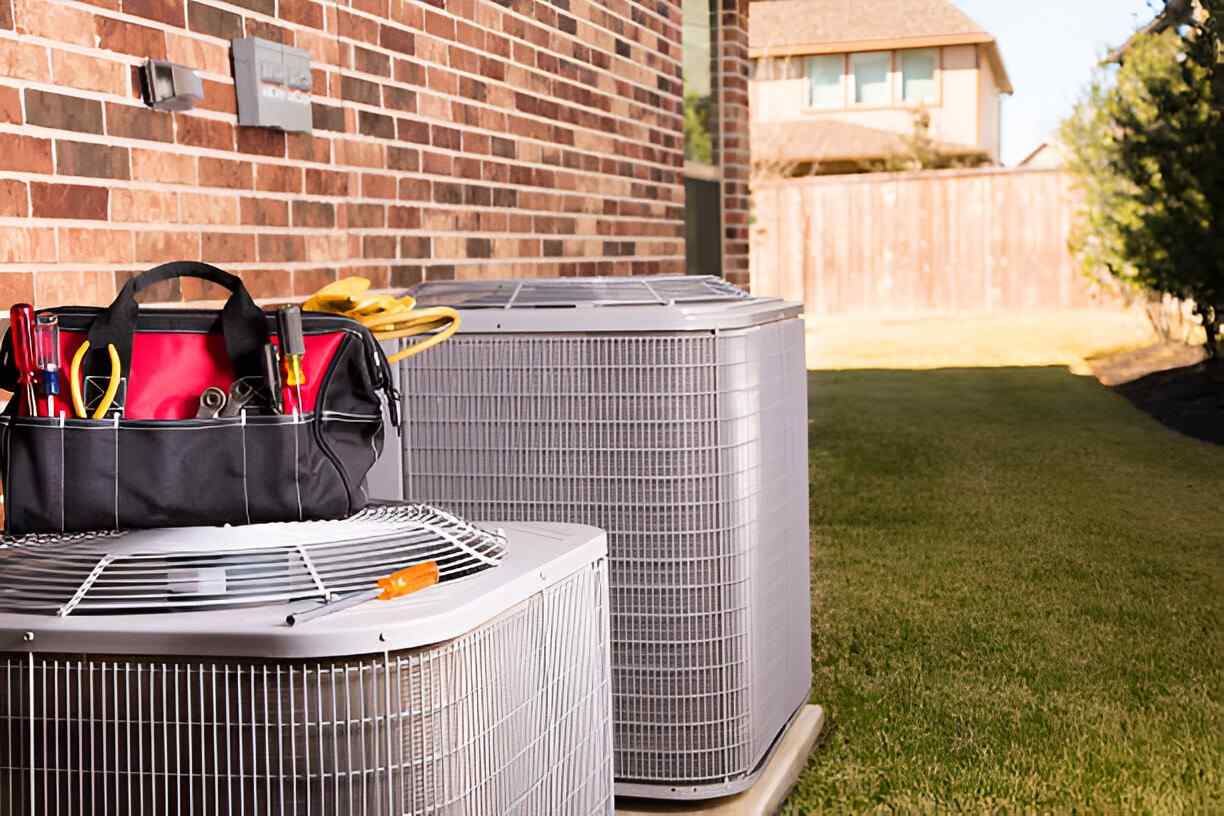AC Installation in Thonotosassa, FL


Common AC installation needs and issues in Thonotosassa, FL
Homeowners in Thonotosassa most frequently seek full-system replacements or upgrades to improve efficiency and humidity control. Typical installation scenarios include:
- New system installations for new construction or additions.
- Replacement of aging or inefficient units with higher SEER systems.
- Converting from window units or baseboard systems to central AC or heat pump systems.
- Ductwork modification or complete replacement for older homes.
- Installation of ductless mini-split systems for targeted zones.
- Electrical panel upgrades to support modern compressor startup loads.
Common AC installation issues encountered locally:
- Incorrect unit sizing causing short-cycling or insufficient dehumidification.
- Undersized, leaky, or poorly insulated ductwork reducing capacity and increasing mold risk in humid weather.
- Improper refrigerant charge and line set installation that reduce efficiency and lifespan.
- Insufficient condensation management (blocked drains or undersized pumps) leading to water damage and mold in high-humidity conditions.
- Failure to address corrosion and mounting for outdoor units exposed to salty, humid air.
How a professional AC installation in Thonotosassa works
A professional installation follows a systematic process designed to match system performance to your home’s needs and local conditions.
- Initial site survey and load calculation
- Conduct a thorough walkthrough to assess insulation, window exposure, attic ventilation, and occupancy.
- Perform a Manual J style load calculation to determine correct cooling and dehumidification capacity. This prevents oversizing that reduces humidity control and undersizing that overworks the system.
- Accurate unit sizing and system design
- Select a system sized for both sensible cooling (temperature) and latent load (humidity).
- Recommend appropriate SEER and HSPF levels to balance upfront cost and seasonal energy savings.
- Specify accessory components like variable-speed blowers or two-stage compressors when needed for better humidity control.
- Ductwork inspection and modification
- Inspect existing ducts for leaks, poor insulation, constrictions, and improper sizing.
- Seal and insulate ducts, balance airflow, or replace sections if necessary to ensure even distribution and efficiency.
- Refrigerant line and electrical work
- Install properly sized and insulated refrigerant lines, minimize unnecessary length, and follow best practices for brazing and evacuation.
- Ensure the electrical service and disconnects meet local code and unit manufacturer requirements. Provide surge protection and proper grounding.
- Step-by-step installation procedures
- Place and level the outdoor condensing unit on a durable pad or riser to protect against flooding and encourage airflow.
- Position the indoor evaporator or air handler for optimal airflow and access.
- Connect refrigerant lines, wiring, and condensate drains; install a condensate pump if needed.
- Install controls and thermostats, ensuring correct communication for multi-stage or variable-speed systems.
- Testing and system commissioning
- Evacuate the refrigerant circuit, weigh in correct charge per manufacturer specifications, and verify pressures.
- Measure airflow, temperature split, and electrical draw. Check for duct leakage and verify thermostat calibration.
- Run humidity tests in typical operating conditions to confirm dehumidification performance.
- Permitting and inspection support
- Prepare and submit required permits and documentation to local building authorities.
- Coordinate inspections and make any code-driven adjustments to ensure compliance with Hillsborough County and Thonotosassa regulations.
- Post-installation walkthrough and maintenance recommendations
- Provide a clear walkthrough explaining operation, filter locations, recommended thermostat settings for comfort and savings, and a maintenance plan to preserve warranty coverage.
Why correct sizing and quality ductwork matter in Thonotosassa
Thonotosassa’s humid subtropical climate places a significant latent load on HVAC systems. Correct sizing ensures the system runs long enough each cycle to remove moisture from the air. Oversized units cool quickly but cycle off before adequate dehumidification occurs, leaving rooms clammy and increasing mold risk. Leaky or undersized ducts force the system to work harder, can pull in humid attic air, and increase utility costs. Properly sized equipment plus sealed, insulated ducts yield better comfort and lower bills.
Durability and corrosion considerations for local conditions
High humidity and proximity to salt air increase the risk of corrosion on outdoor coils and fasteners. For systems installed in Thonotosassa:
- Use corrosion-resistant finishes or coated coils on outdoor units when practical.
- Elevate condensing units on pads or risers to reduce flood exposure during heavy rains.
- Protect refrigerant lines and electrical connections with proper insulation and weatherproofing.
- Secure units against wind uplift per local code if required.
What to expect during testing and commissioning
Expect documentation of measured performance: airflow rates (CFM), temperature differentials, refrigerant pressures and superheat/subcooling values, and electrical measurements. Commissioning confirms the system meets design expectations and manufacturer requirements. Proper commissioning also helps preserve warranties and demonstrates that the system will deliver the stated efficiency and comfort levels.
Maintenance recommendations to protect your investment
Consistent maintenance is crucial in this climate:
- Change or clean filters every 1 to 3 months depending on filter type and occupancy.
- Schedule professional tune-ups at least once a year; many homeowners in humid climates benefit from biannual checks to prepare for peak cooling season and postseason inspections.
- Keep outdoor coils clean and clear of vegetation to maintain airflow.
- Inspect condensate drains and pans regularly to prevent clogs and overflow.
- Consider a programmable or smart thermostat to manage runtimes and humidity control efficiently.
Professional, code-compliant AC installation in Thonotosassa, FL reduces energy costs, improves humidity control, enhances indoor air quality, and extends equipment life. By focusing on accurate load sizing, quality ductwork, corrosion protection, and thorough commissioning, you get a system tailored to local weather challenges and your household needs.
Service Areas


